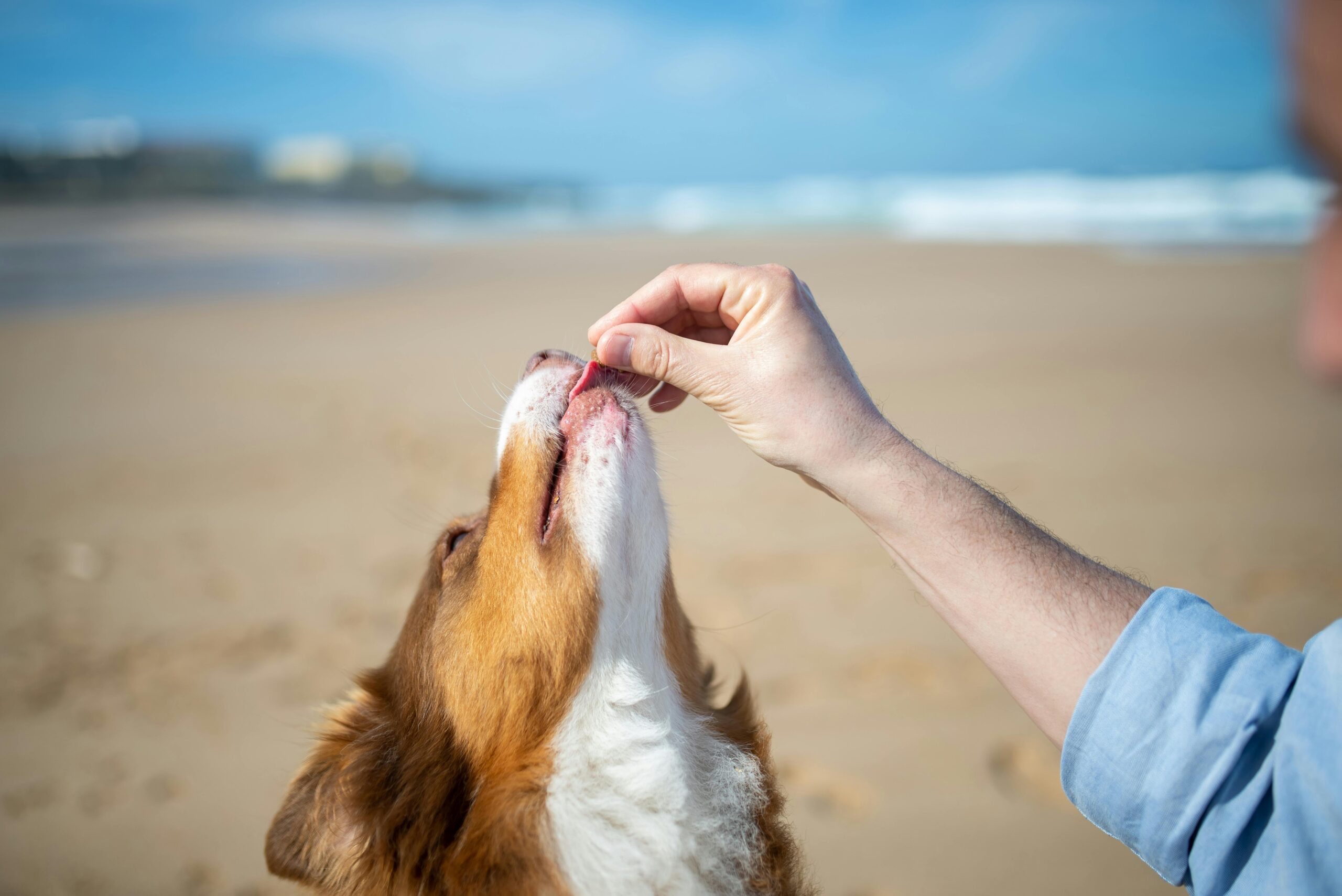Your cart is currently empty!

How to Use Treats Effectively in Dog Training
Treats are a powerful tool in dog training. When used correctly, they motivate your dog, reinforce positive behavior, and make learning fun for both of you. However, it’s important to use treats strategically to maximize their impact and avoid overuse. In this guide, we’ll cover how to use treats effectively, helping your dog thrive in training sessions.

1. Choose High-Value Treats
Not all treats are created equal in your dog’s eyes. High-value treats—those your dog finds extra tasty—are the key to grabbing and keeping their attention during training. Soft, bite-sized options are ideal because they’re quick to eat, keeping the session moving smoothly. Save the most irresistible treats for new or challenging commands.
2. Keep Treats Small
Training involves repetition, so you’ll be giving your dog lots of rewards. To avoid overfeeding, use treats no bigger than a pea. Remember, your dog doesn’t care about size—they’re excited by the reward itself. Tiny treats ensure they stay motivated without becoming full or distracted.
3. Pair Treats with Praise
While treats are effective, they shouldn’t be the only reward. Pair each treat with verbal praise or a happy tone. Over time, this helps your dog associate your encouragement with positive outcomes, making treats less essential as they progress.
4. Use Treats for Positive Reinforcement
Treats should reward good behavior, not bribe it. Offer a treat immediately after your dog performs the desired action, such as sitting or coming when called. Timing is crucial—rewarding too late may confuse your dog and reinforce the wrong behavior.
5. Gradually Reduce Treats
Once your dog reliably performs a command, you can start phasing out treats if desired. Replace them with other rewards like praise, toys, or playtime. This ensures your dog learns to obey without expecting food every time. If you’re training your dog for sports such as obedience or agility, this will be necessary for competition. However, you should still use treats occasionally to keep training fresh and rewarding.
6. Avoid Overusing Treats
While treats are motivating, overusing them can lead to dependency or weight gain. Balance treat-based rewards with non-food incentives like affection or a favorite toy. Monitor your dog’s daily calorie intake and adjust their meals if necessary to prevent overfeeding.
7. Be Consistent
Consistency is key to effective training. Use treats the same way each time and make sure all family members follow the same approach. This helps your dog understand what’s expected and accelerates learning.
8. Create a Positive Training Environment
Treats work best in a calm, distraction-free setting. Start training at home or in a quiet space before introducing distractions. Gradually increase the challenge by practicing commands in more stimulating environments, rewarding your dog for staying focused.
9. Experiment and Adapt
Every dog is unique. Some respond better to crunchy treats, while others prefer soft ones. Pay attention to what excites your dog most and adapt your training methods to suit their preferences and energy level.
Final Thoughts
Treats are a fantastic tool for teaching your dog new commands and reinforcing good behavior. By choosing the right treats, using them strategically, and gradually reducing their reliance, you’ll build a positive training foundation that leads to lasting results.
With patience, consistency, and plenty of rewards, your dog will enjoy the learning process—and you’ll enjoy a well-trained, happy companion. So grab your treat pouch, start training, and celebrate every little success along the way! 🐾

